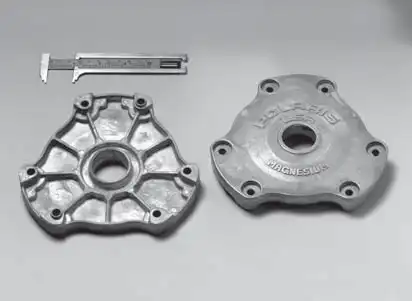
Knowledge
Advantages and Disadvantages of Die casting
Advantages
- Die-cast parts are relatively cheaper and produce uniform quality for large volume production. Lower labour costs are due to semi or fully automated processes.
- Intricate forms and complex shapes can be cast easily, with part sizes ranging from 25g to 25Kg.
- Parts with walls as thin as 0.38 mm are possible because of the high pressure used during the process.
- Because the molten metal rapidly cools at the die walls, the casting has fine-grained hard skin with excellent strength. As a result, as the wall thickness decreases, the strength-to-weight ratio of die-cast components increases
- Generates smooth surfaces for bearings that would otherwise be machined.
- It can generate net shape products at high rates requiring little or no post-processing.
- Excellent dimensional accuracy and good surface finish – 0.8-3.2 um Ra.
- Smaller pieces can be manufactured using either multi-cavity die or miniature die casting

Die casting disadvantages
- Die casting parts are only economical for large production batches due to their high equipment cost
- High melting point metals and alloys are not suitable
- Because of iron content, ferrous metals such as stainless steel, carbon steel, and alloy steel tend to rust hence not suitable
- Large pieces are unable to be cast due to die design and process limitation
- High die cost and generally long lead time.
- Changes to part design are time-consuming and expensive, hence worth prototyping the part before committing to the die casting
- Porosity due to trapped air and gases affects the integrity of the part. Vacuum die casting reduces porosity by creating a vacuum before molten metal fill.
Welcome to reach out us for more details. Please feel free to call us at 029 81161513 or email us at info@castings-forging.com



